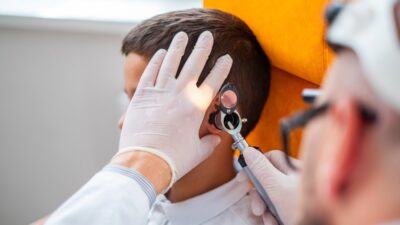Medicine and medical technology have seen leaps and bounds in terms of development, efficiency and progress. Several procedures are discovered, refined, improved or tweaked in order to give the best treatment and diagnosis a patient can receive and by easing up the doctor’s work by making the identification process a whole lot faster and more effective. There has now been a myriad of tests and scans that can easily identify problem areas, tumours, diseases, attacks and etc., and doctors rely on this technology in order to provide not just the accurate diagnosis but also the right medicine and the right procedures and treatments. As it should sound, both patients and doctors rely heavily on this technology in order to get the best out of healthcare and medicine, and to overall, live a problem free life when it comes to health.
One of these interesting technologies is the CT KUB scan. This might be a fairly foreign term for those who are not in any way associated with the medical field. However, this article will provide a few basics and a very general overview into the subject at hand. This will help better know when the scan is done, how it is done and when to request for it, and if can be requests at all. The advantages, disadvantages, the technique and what it can find will be outlined in this article for your quick and simple reference. The subject may need a more in-depth study, so this is an excellent place to start when you are trying to get an idea before you begin your in-depth research into the technology. We will start with what CT KUB is and then delve in to the nitty-gritties of the same.
What is a CT KUB?
Let us start at the very basics of things. What is a CT KUB? A CT KUB is a technique that is fast and non-invasive in nature that images modality for suspicions of urolithiasis. This is usually considered the initial imaging in emergencies and settings of that nature. It is abbreviated to, ‘Computed Tomography of Kidneys, ureters and bladder’.
It comes with its set of advantages and disadvantages. We shall take a quick look into the advantages to better understand the disadvantages.
The advantages of CT KUB:
The CT KUB has a myriad of advantages including but not limited to the following:
- Quick
As mentioned in the definition, this imaging is fast.
- Easily accessible
Medical equipment that is easy to access is always an advantage, on top of being fast, this makes it an excellent tool during emergencies.
- Identification
It identifies renal tract calculi and the sequelae of the same.
- Other assessments
If the patient is found negative for calculus disease, then this is used to asses for other causes of flank pain.
Disadvantages of CT KUB:
Like any other method, this one also has its disadvantage. The biggest one is the exposure of the patient to ionizing radiation. One may wonder why this is a disadvantage. Exposure to ionizing radiation can risks a damage to tissues or cells. Overtime, the radiation can cause cancer amongst many other health issues. However, if the radiation is only small, the risks of getting cancer is also very less. But one should not ignore the possibility as it is not a guarantee that cancer will not be formed on exposure. Therefore, given its advantageous pros, it has a very sensitive disadvantage that many patients or doctors may have to think about before proceeding as the patient may have other underlying symptoms or reasons for not going forth with exposure to ionized radiation.
Now that we have an overall idea of what the procedure is about, it is important to know a little about the technique of how the procedure works. Of course, there are standard protocols that will vary from institution to institution, but there are some steps that are commonly followed during the process. This will be outlined. After knowing about the procedure of the CT KUB, you will be better armed when you are taking a CT KUB with contrast scan in bangalore.
The Technique:
The procedure of the CT KUB varies depending on what the guidelines or the protocols of the institution or healthcare unit are. However, there are some typical steps that are commonly followed. These are outlined below to get a very basic idea of the procedure.
- A multi-detector computed tomography scanner performs the CT scanning. Ideally, a non-contrast CT scanned is performed on this scanner.
- Patient positioning: Supine or prone
In order to assess stones that are near the VUJ that may have passed recently is an advantage to having prone.
If the supine scan detects calculus close to the VUJ, a limited pelvic scan in prone is performed by some institutions and health care units.
- In order to make a proper diagnosis through a good evaluation, data is interpreted through the usage of sagittal, axial and coronal images that are reformatted.
Above is the basic of a typical procedure for CT KUB. Be aware that this might change depending on the institution one is receiving the scan from. Now that we know how it processes and images the patient’s body, it is important to know what it detects.
Findings through a CT KUB scan:
This scan can help in the identification of a renal tract that is calcified and the calculi size and position. It helps with the assessment of the calculi’s sequelae, i.e., whether or not it is obstructed or infected and so on and so forth.
The cost of CT KUB with contrast scan in Bangalore may range anywhere around Rs 2,400 or above. Make sure to get it done with an institution that is reliable and trustworthy. Also keep in mind the risks the scan may entail and have a thorough talk and go over other options with your health care provider if need be.










Comments